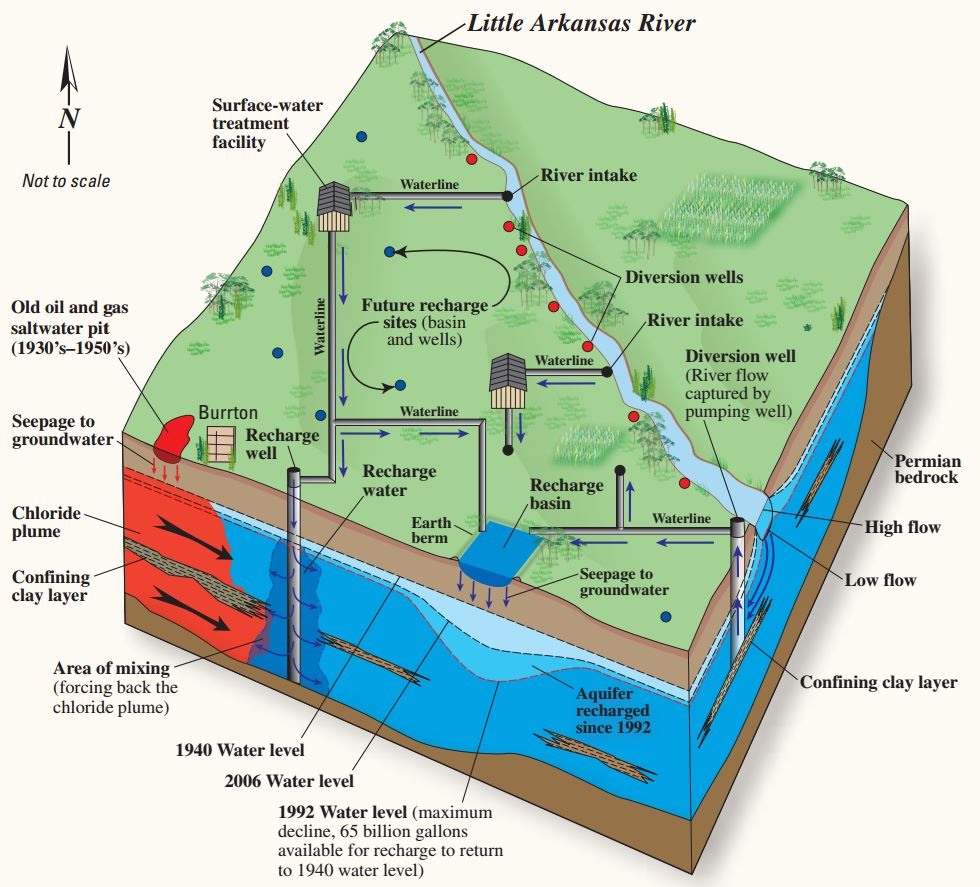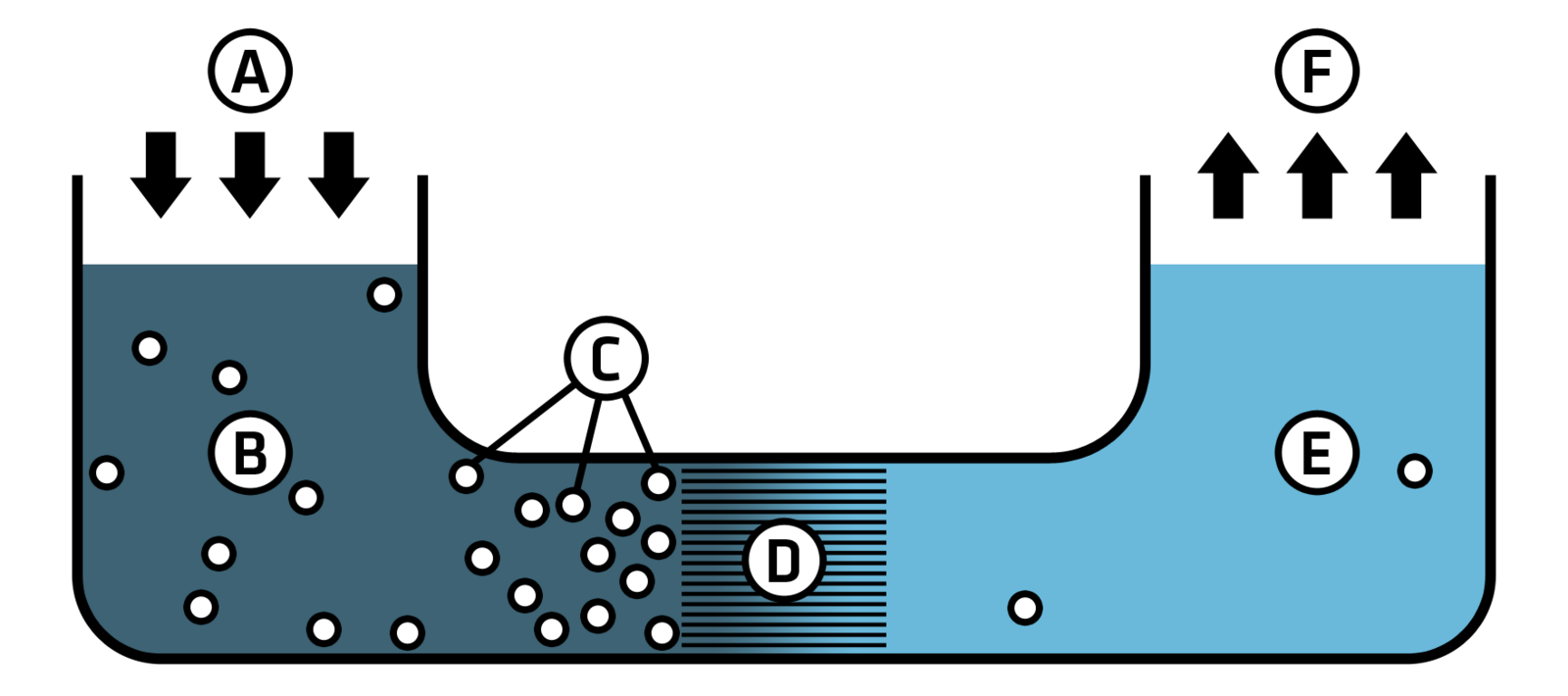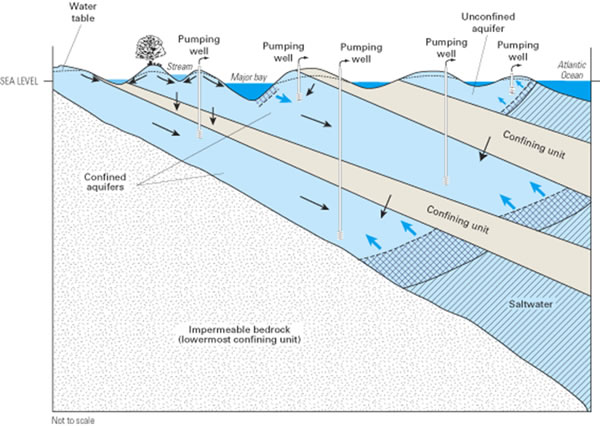IB Syllabus focus:
‘Address stress with transfers, pipelines, ASR/AR, cloud seeding, desalination, treatment plants, estuary barrages. Impacts include brine discharge, noise, air pollution, saline intrusion and energy emissions.’
Water stress and scarcity increasingly push societies towards large-scale technological solutions. While these approaches can expand supply and improve access, they often carry significant environmental and socio-economic trade-offs requiring careful management.
Large-Scale Options for Addressing Water Stress
Water Transfers and Pipelines
Water transfers involve moving water across regions using canals or engineered rivers. Pipelines achieve the same purpose underground or over long distances. These methods allow dry areas to gain water from wetter regions, reducing immediate shortages.
Advantages: Can provide reliable water to drought-prone areas, support urban growth, and secure agricultural irrigation.
Challenges: Expensive to construct and maintain, energy-intensive, and potentially disruptive to donor ecosystems.
Aquifer Storage and Recovery (ASR) / Aquifer Recharge (AR)
Aquifer Storage and Recovery (ASR) and Artificial Recharge (AR) involve injecting surface water into aquifers during times of surplus, later extracting it during shortages.

Conceptual diagram of an ASR/AR scheme showing how treated surface water is injected or infiltrated into an aquifer and later recovered during dry periods. The figure visualises storage, recovery, and monitoring points in a way that matches the IB specification’s focus on large-scale options. Minor site-specific labels (Equus Beds) exceed syllabus detail but the process is generic and applicable elsewhere. Source.
Aquifer Recharge (AR): The process of deliberately enhancing natural groundwater replenishment by directing surface water into underground aquifers.
These techniques can stabilise supplies in areas with variable rainfall. However, risks include contamination of groundwater and over-reliance on unsustainable withdrawals if management is weak.
Cloud Seeding
Cloud seeding is a form of weather modification where substances such as silver iodide are dispersed into clouds to encourage precipitation.
Potential benefits: Short-term increases in rainfall to fill reservoirs or support agriculture.
Limitations: Results are uncertain, dependent on meteorological conditions, and can divert rainfall away from other regions, raising ethical and political issues.
Desalination
Desalination converts seawater into freshwater, typically through reverse osmosis using semi-permeable membranes or through thermal distillation.

Simplified RO schematic: pressurised seawater passes a semi-permeable membrane, producing permeate (freshwater) and a concentrated brine stream. This clean, label-light diagram suits IB level focus on the core process. Pre-/post-treatment units are not shown, which keeps attention on the membrane separation step. Source.
Desalination: The removal of dissolved salts and minerals from seawater or brackish water to produce drinkable freshwater.
Advantages: Provides a drought-proof, coastal source of freshwater independent of rainfall.
Drawbacks: Very energy-intensive, expensive, and produces brine discharge (highly saline wastewater), which can harm marine ecosystems if not properly managed.
Treatment Plants
Treatment plants clean polluted or contaminated water to make it safe for human consumption or reuse in industry and agriculture.
Primary treatment: Removes large solids and sediments.
Secondary treatment: Employs biological processes to degrade organic matter.
Tertiary treatment: Targets nutrients and chemical contaminants for high-quality outputs.
These plants reduce reliance on freshwater sources but require substantial financial and energy investment.
Estuary Barrages
Estuary barrages are barriers constructed across river mouths to control tidal flows and create freshwater reservoirs.
Positive impacts: Can provide stable freshwater storage, flood control, and opportunities for hydropower.
Negative impacts: Disrupt estuarine ecosystems, fish migration, and sediment transport, often harming biodiversity.
Environmental Impacts of Large-Scale Water Options
Brine Discharge
Desalination creates highly concentrated brine that is usually discharged back into the sea. The elevated salinity and chemical residues can stress marine life and reduce biodiversity.
Noise and Air Pollution
Construction and operation of large facilities such as pipelines, treatment plants, and desalination units often generate noise pollution and air pollution. These disturbances affect both local communities and wildlife.
Saline Intrusion
When groundwater is over-extracted, especially near coasts, saline intrusion occurs.

Schematic illustrating modes of saltwater intrusion (lateral encroachment and vertical upconing) toward pumping wells in coastal aquifers. It clarifies how reduced freshwater heads allow the saline interface to migrate landward, contaminating supplies. The multilayer aquifer detail slightly exceeds IB depth; focus on the direction arrows and the labelled intrusion modes. Source.
Saline Intrusion: The movement of seawater into freshwater aquifers, often caused by excessive pumping of groundwater.
This reduces water quality, damages agricultural land, and can make supplies undrinkable.
Energy Use and Emissions
Many large-scale water solutions, particularly desalination and water transfers, demand high levels of energy consumption. If powered by fossil fuels, this contributes to greenhouse gas emissions, linking water management directly to climate change challenges.
Balancing Benefits and Risks
Large-scale water options are effective in expanding supplies but come with trade-offs. Their feasibility depends on balancing human water security with environmental sustainability. Future strategies increasingly combine technological interventions with conservation measures to reduce dependence on environmentally costly projects.
FAQ
Desalination requires high energy input, usually from fossil fuels, making it expensive and carbon-intensive. This links water provision directly to greenhouse gas emissions.
Disposal of brine is another challenge. Without careful management, concentrated salts and chemical residues discharged into marine environments can damage biodiversity.
Efforts to improve sustainability include using renewable energy sources, such as solar-powered desalination, and developing advanced membranes that reduce energy demand.
Cloud seeding alters natural weather systems, potentially redistributing rainfall from one region to another. This raises ethical and political concerns, especially where neighbouring countries share river basins.
There are also uncertainties in effectiveness. Seeding does not guarantee rainfall and depends heavily on existing cloud conditions, making it an unreliable long-term strategy.
Estuary barrages change the natural flow of freshwater and tidal systems. This disrupts habitats relied upon by fish, birds, and other estuarine organisms.
Fish migration routes may be blocked, reducing breeding success.
Sediment movement can be altered, affecting coastal landforms and nutrient distribution.
Changes in salinity can stress species adapted to brackish conditions.
Communities in donor regions may face reduced access to their own water, sparking conflicts and resistance. Environmental groups often highlight inequities when ecosystems are sacrificed to meet urban or agricultural demand elsewhere.
Recipient regions benefit from increased security, but dependence on external supplies can make them vulnerable if transfers are disrupted by political disputes or climate variability.
Modern treatment plants increasingly aim to recover resources, not just clean water.
Nutrient recovery: extracting phosphorus and nitrogen for fertiliser use.
Energy recovery: generating biogas from organic waste during secondary treatment.
Water reuse: producing high-quality effluent for irrigation, industry, or even potable reuse.
These approaches reduce waste and link water management to broader sustainability goals.
Practice Questions
Question 1 (2 marks)
Define the term saline intrusion and explain one environmental consequence of this process.
Mark scheme:
Definition of saline intrusion: the movement of seawater into freshwater aquifers, often caused by over-extraction of groundwater. (1 mark)
Environmental consequence such as reduced water quality, contamination of agricultural land, or making supplies undrinkable. (1 mark)
Question 2 (5 marks)
Evaluate two large-scale technological options used to address water stress, with reference to both benefits and environmental impacts.
Mark scheme:
Identification of two large-scale options, e.g. desalination, water transfers, aquifer recharge, cloud seeding, estuary barrages, treatment plants. (1 mark for each, up to 2 marks)
Explanation of benefits, e.g. reliable supply, drought resilience, flood control. (1 mark for each relevant benefit, up to 2 marks)
Explanation of environmental impacts, e.g. brine discharge, saline intrusion, ecosystem disruption, high energy use. (1 mark for clear evaluation of impact, up to 2 marks)
Balanced evaluation showing trade-offs between benefits and impacts. (1 mark)
Maximum: 5 marks.

